2022 was a very productive year for the Georgia chapter of TACF and its many citizen volunteers. Here is a quick summary of progress, starting with a summary of what we’ve been able to accomplish in the breeding program since 2006.
Seed type |
Crosses |
| American chestnut C. dentata | 123 |
| F1 | 17 |
| BC1 | 17 |
| BC2 | 2 |
| BC3 | 113 |
| BC4 | 114 |
| Chinese chestnut C. mollissima | 31 |
| Darling 58 (OXO) | 7 |
| Other (Quasi B1, C. henryi, C. pumila, etc.) | 38 |
Total |
461 |
Summary of summer/fall 2022 breeding work:
11 backcross lines for blight resistance screening
4 backcross lines for Phytophthora root rot (PRR) resistance screening
4 backcross lines for both blight and PRR resistance screening
14 C. dentata or nearly 100% C. dentata lines for germplasm conservation
9 Asian lines for phylogenetic study of blight resistance
Total of 1234 seeds produced
Other key activities summer/fall/winter 2023
Grafting: Grafted 62 scions of pure C. dentata on C. mollissima root stock. 14 alive from 4 lines. Also, scion material was sent to USFS for nut grafting (material from about 25 different C. dentata in GA was collected and sent in January 2023)
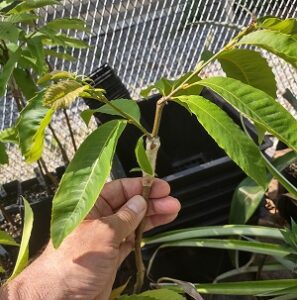
Pollen collection: Pollens collected, processed, and frozen from 27 trees (10 C. dentata, 14 “Best” backcross trees, and 3 F1s).
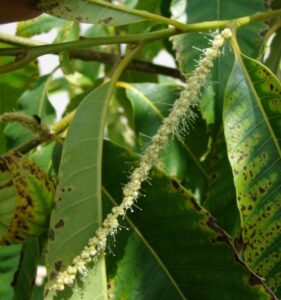
Best X Best crosses: While our Best X Best hand pollinations at UGA largely failed, our GA pollens were successfully used to produce at least seven crosses by the Tennessee chapter (more by Meadowview and CC chapters).
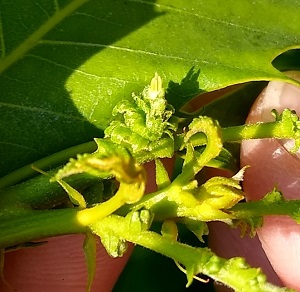
Small stem assays (SSAs): SSAs were completed on ~350 seedlings at Berry College (11 backcross lines plus controls). Small stem assay manuscript was published in Plant Disease (Conn, et al.). This Alternate SSA (AltSSA) method is beginning to be the standard for early blight screening in the TACF program. Winners going to Richards orchard.
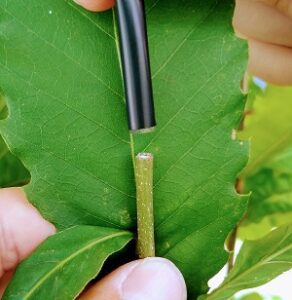
Blight evaluations, orchard inoculations, and culling: Done at Roy Richards and Flint backcross seed orchards.
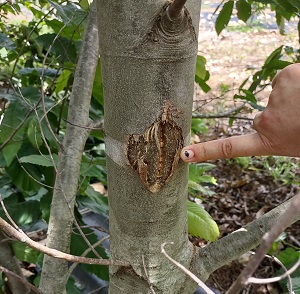
Tree mapping: Several new Castanea trees were catalogued and mapped, including one C. dentata in Oconee County and about 27 new C. dentata from recent TreeSnap observations. See map here: https://www.google.com/maps/d/edit?mid=1zVPTIqnrXk5PVFMa2Uz4K5kSZ4SRepc&ll=34.0926447786694%2C-83.66902105&z=7
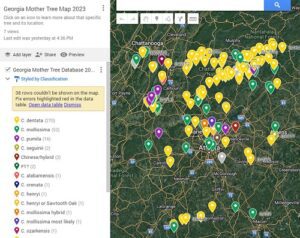
Germplasm conservation: C. dentata seedlings from 2021 crop are being distributed to various germplasm conservation orchards for planting winter 2022-23. Embryos from GA trees were successfully cloned from several sources by the Merkle UGA lab and some lines have been successfully transformed with the OXO gene.
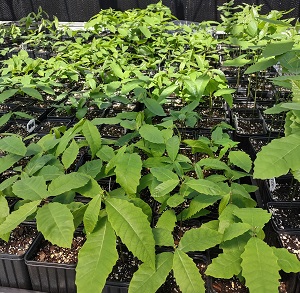
Breeding orchard plantings: Trees were added for PRR screening at Flint North Ridge site in October 2022. Trees are ready for planting at Roy Richards seed orchard in early 2023.
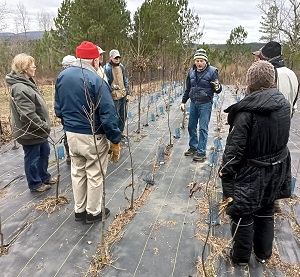
Miscellaneous other:
Phylogenetic study: Seeds from C. mollissima, C. henryi, and C. seguinii were harvested for a collaborative phylogenetic study being organized by Jared Westbrook at TACF.
Tree searching: Testing of protocol is underway for locating new C. dentata using drones (Jack Rogers).
DNA analysis: A few samples of leaves were taken from key trees for DNA analysis.

